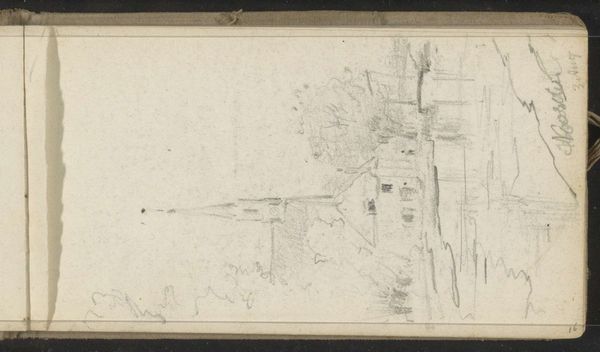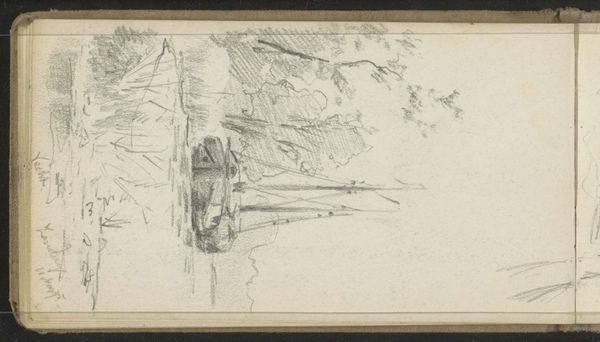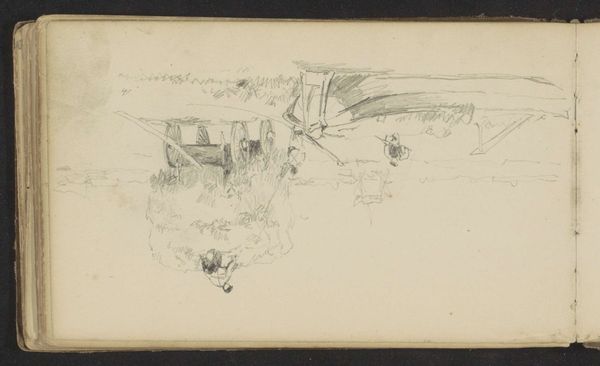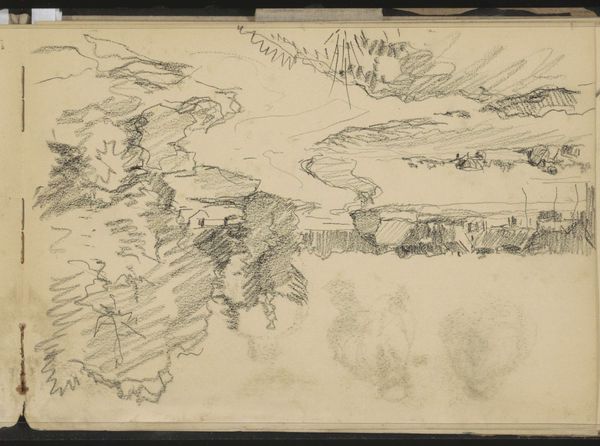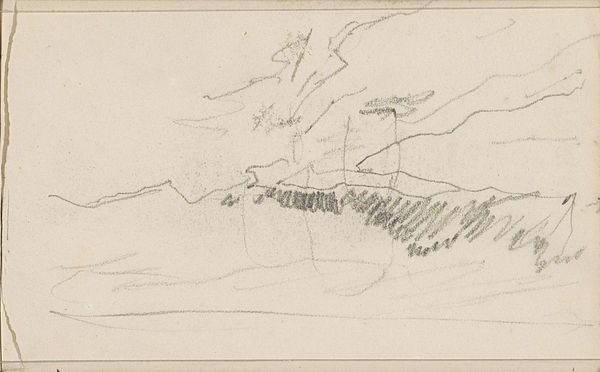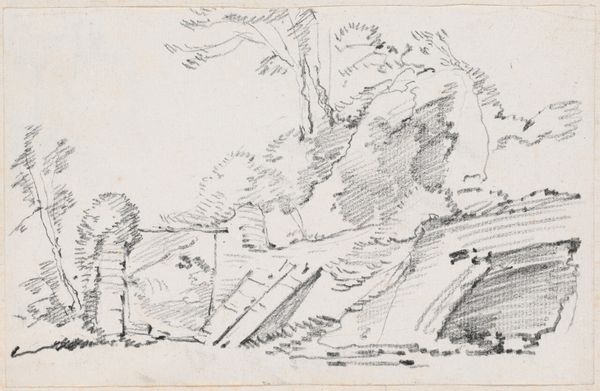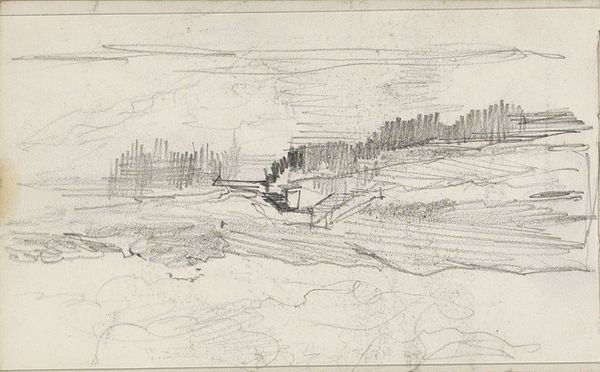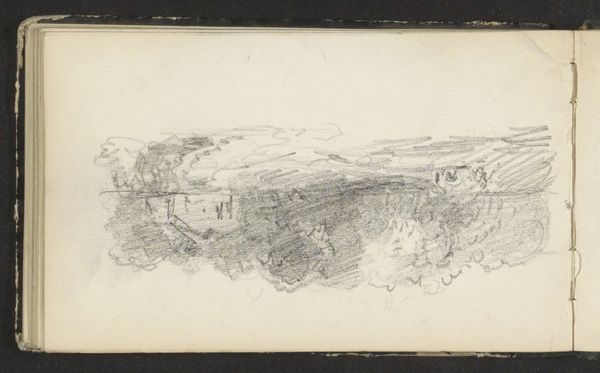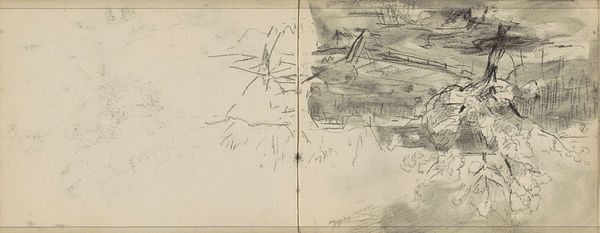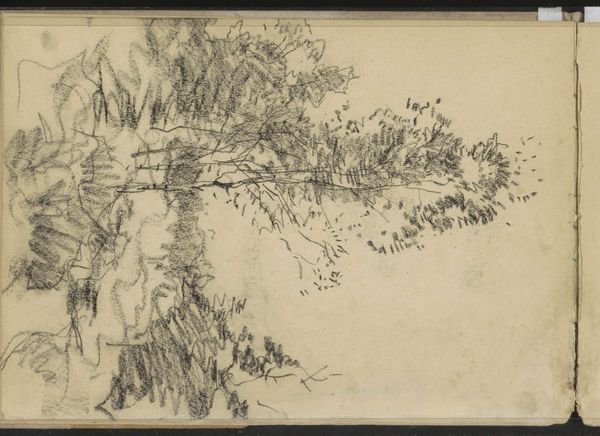
Dimensions: height 104 mm, width 179 mm
Copyright: Rijks Museum: Open Domain
Curator: This sketch has a wonderfully ethereal quality. It feels unfinished, like a memory fading at the edges. Editor: I see that too. We’re looking at Willem Cornelis Rip's "Figuur met een roeiboot aan een waterkant bij Amersfoort," dating from about 1895 to 1899. It's a drawing, probably a study for a larger work. You can practically feel the artist experimenting with line and form, grappling with representing the scene. I imagine Rip standing there, working quickly en plein air. Curator: It really captures the serenity of the Dutch landscape, though. Is it *just* a landscape, though? Who is centered in that boat? What kind of labor, or leisure, is being captured? Is it fair to romanticize rural simplicity when the vast inequality of the era afforded him the possibility to sit beside the water undisturbed, presumably equipped with everything he needs? Editor: Those are essential questions to bring forward when assessing Rip’s perspective, absolutely! It’s important to keep that framework in mind. Looking at it from the lens of artistic production, this isn’t a polished, commissioned piece; it's likely from a sketchbook, meant for his own exploration and development. The materials – pencil on paper – are humble, readily available, speaking to the democratization of art-making at the time as supplies become easier to produce. Curator: That also ties into issues of accessibility, though. While the tools may be more easily obtained, artistic training was still primarily the purview of the privileged, wasn't it? And that leisure time... Consider that gender also plays a crucial role, when evaluating whose history gets captured, and the art historical narratives subsequently told. Editor: It definitely adds a layer of complexity when thinking about access to education. For me, it highlights the beauty and labor of this seemingly effortless artistic creation. To consider how those strokes brought to life an image, the planning it took, how that vision materialized, with consideration given to its placement and worth. Curator: Right, there's a real beauty in the attempt itself. I like how you center the materiality, reminding us of the sheer physical work of creation. It provides a new framework. Editor: Likewise! Highlighting gender issues adds to my analysis as well and a lot of the hidden narratives throughout history.
Comments
No comments
Be the first to comment and join the conversation on the ultimate creative platform.
